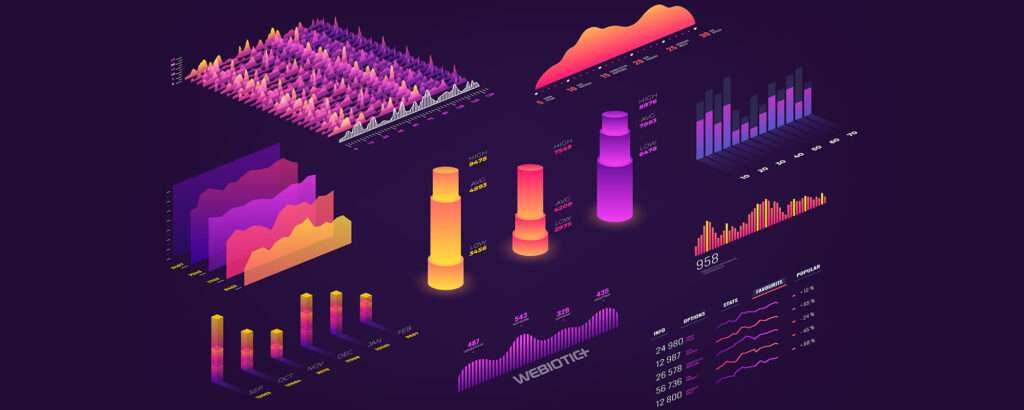
https://wearesocial.com/Our mobile devices have evolved beyond being a source of entertainment and checking our email.
We use our phones for a huge variety of everyday conveniences, from listening to music and podcasts on our daily commute to banking, delivery services, and more.
This evolution has naturally led to people spending more time on their smartphones than ever before.
But how much time?
And what kind of apps are people using the most?
Understanding these kinds of statistics and the data surrounding mobile apps and their users can help you get a better understanding of how your own mobile app can make a splash in such a competitive market.
In this definitive guide, we’ll highlight the most important statistics in the world of mobile apps and what they mean for your app project.
Table of Contents

It’s exciting to see just how much time mobile users are spending on apps.
For most people, opening up their favorite apps has become an essential part of their daily routine.
This kind of insight can reveal opportunities you might not have even thought of.

1.1: General Cell Phone Usage
According to a study from RescueTime, people spend an average of three hours and 15 minutes on their phone each day.
This means that the most avid smartphone users likely spend even more time than this—sometimes well over four hours.
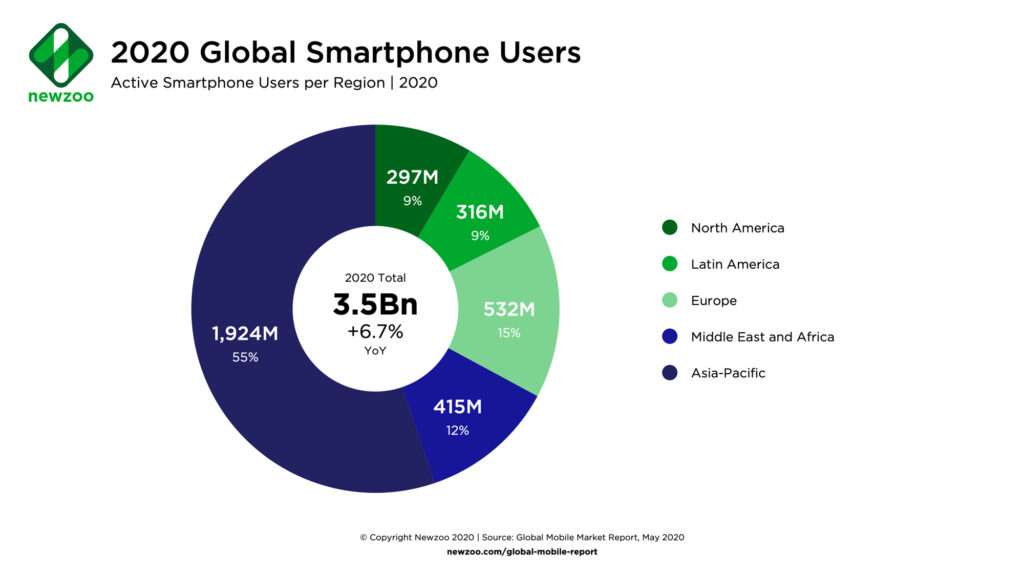
1.2: App Use
If you look at the data, you’ll see that mobile app usage is on an upward trend, especially as mobile apps become more innovative and work harder to solve our problems.
In the first quarter of 2022 alone, users downloaded nearly 28.3 billion apps from Google Play and 8.5 billion apps from Apple’s App Store.
You can’t ignore those numbers, and they’re growing all the time.
While most of these app downloads are free, a little over 6% of them are paid-for app downloads.

1.3: Frequency of App Use
Most people like to open their favorite apps several times a day.
Research from a company called Asurian shows that users are checking their phones 96 times a day on average.
Almost Half of Smartphone Users Spend More than 5 Hours a Day on a Mobile Device
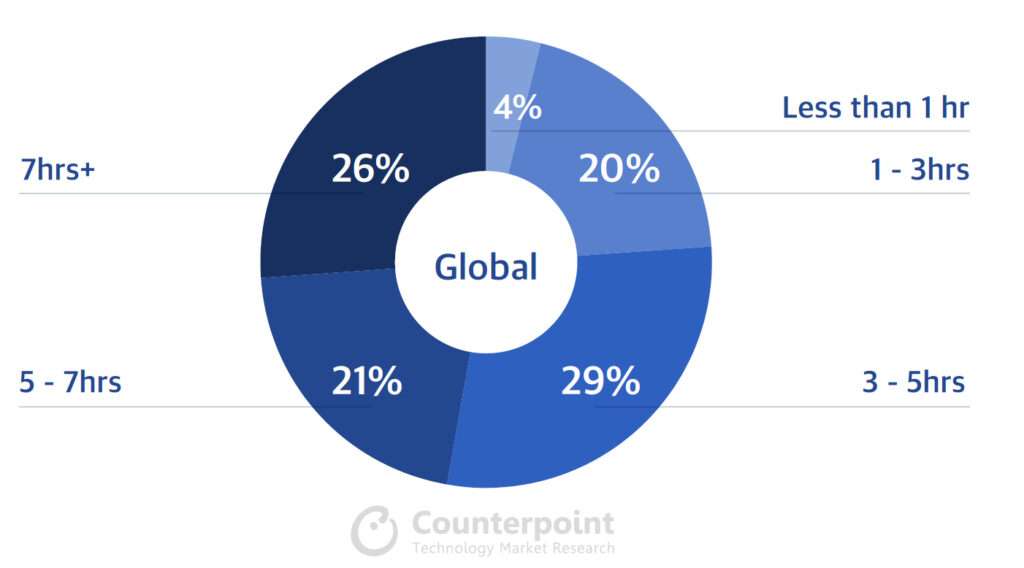
But when it comes to checking apps specifically, estimates can vary.
In a 2018 study from The Manifest, about half of respondents said they checked their apps between one and 10 times per day.
Six percent said they checked them between 51 and 100 times per day and two percent said they checked them more than 100 times per day.
PRO TIP:
Remember, users may also be underreporting their app use, especially since we tend to check our phones sporadically throughout the day rather than in a single sitting.
1.4: App Categories
Most Downloaded Apps Overall Worldwide, 2019

Photo Credit: appannie.com
When it comes to app categories, social media is the clear winner.
Roughly 50% of the average person’s app usage is spent on social media apps, like Facebook, Instagram, Twitter, or communications apps, like Whatsapp.
The next most popular category is video and entertainment.
Top iOS App Store Categories, Q2 2020

An increasing number of people are using their phones to watch shows on platforms like Netflix and Hulu.
The third most popular app category is gaming.
PRO TIP:
Think carefully about which app category your mobile app fits into and do research to see who your competitors are and how you can stand out.
Knowing your target demographic is absolutely essential when building an app.
After all, different groups of people have their own unique habits when it comes to smartphone use and understanding this can help you connect with them much more effectively.
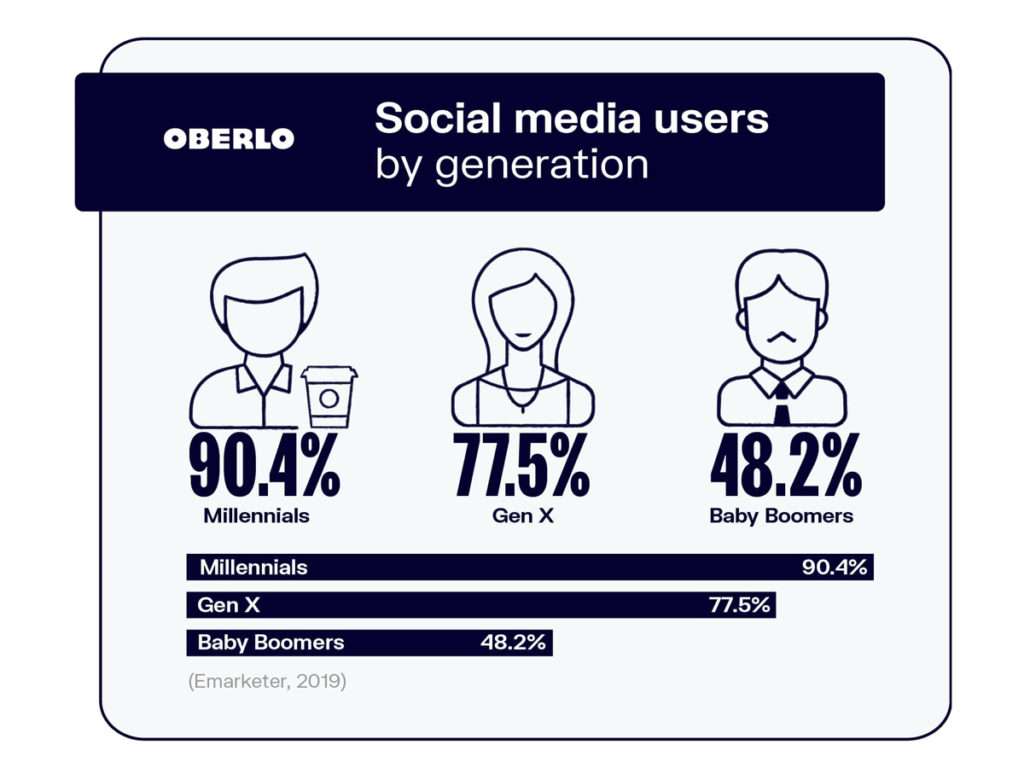
Photo Credit: oberlo.com
2.1: Millennials Group
Millennials are a popular target age group for app developers.
In general, these are people born between 1981 and 1996, putting them between the ages of 25 and 40 this year.
They’re digital natives, so they’re more likely to turn to the internet for solutions when they have a problem.

When compared with other age groups, Millennials spend a significant amount of time on social media.
In fact, a Mindsea study showed that nearly 70% of Millennials say they use social media more than any other apps.
What does this data tell us about Millennials?
They’re socially motivated and they want to connect with their peers.
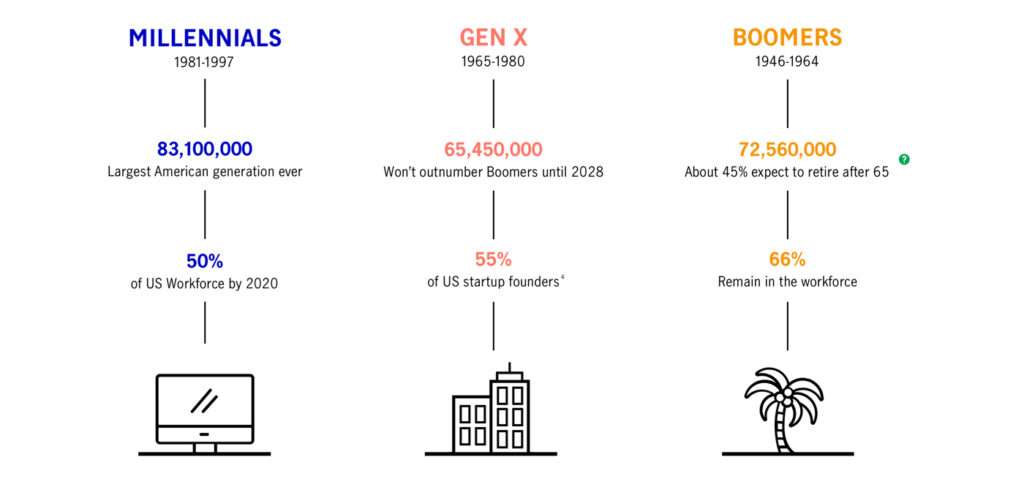
Photo Credit: sponsorcontent.cnn.com
This is also reflected in the way they decide which apps to use.
The most important deciding factor for them is whether or not it has unique features, and the second most important is whether or not their friends say the app is good.
Millennials are also much savvier with their smartphones than other generations and they like to use them more efficiently.
How Each Generation Lives

Photo Credit: sponsorcontent.cnn.com
The same Mindsea study showed that Millennials are likely to avoid apps that drain their battery or use too much data.
The study also showed that 54% of Millennials have more than three app pages of apps on their home screen.
An earlier study from 2017 showed that 77% of Millennials use app folders on their home screen to stay organized.
How Millennials, Gen X, and Boomers Spend Their Money
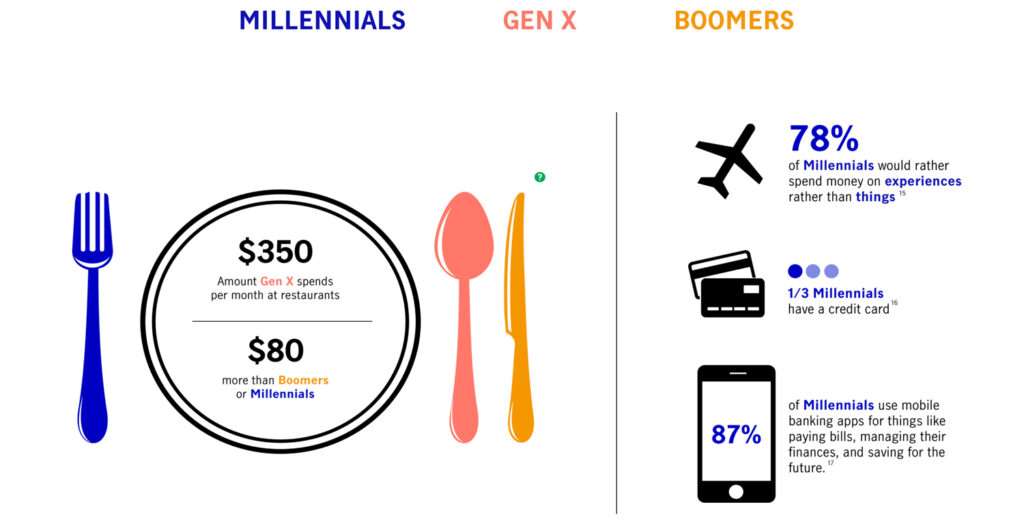
Photo Credit: sponsorcontent.cnn.com
It also showed that 21% of Millennials and Gen Z will delete an app if the logo is ugly, which is far more than any other generation.
2.2: Gen Z Group
Millennials have been a highly sought-after demographic for app developers for years, but Gen Z is changing the game.
Gen Zers were born between 1997 and 2015, which makes them anywhere from 6 to 24 years old this year.
Gen Z’s Mobile Engagement in 2019
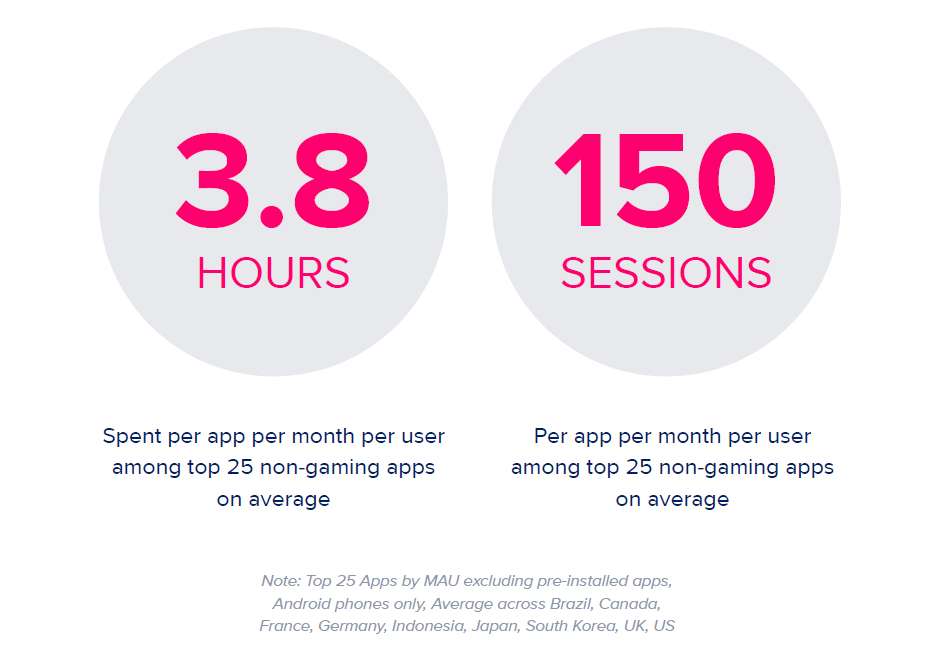
Photo Credit: appannie.com
While the youngest members of Gen Z likely aren’t making too many of their own app decisions, older Gen Z members can actually be very influential.
They’re just starting to reach adulthood and they’ve grown up with more modern and sophisticated technology than Millennials have.
Over 98% of Gen Z owns a smartphone.
The average Gen Z member received their first smartphone at the age of 10, so using them comes naturally.
Gen Z at a Glance
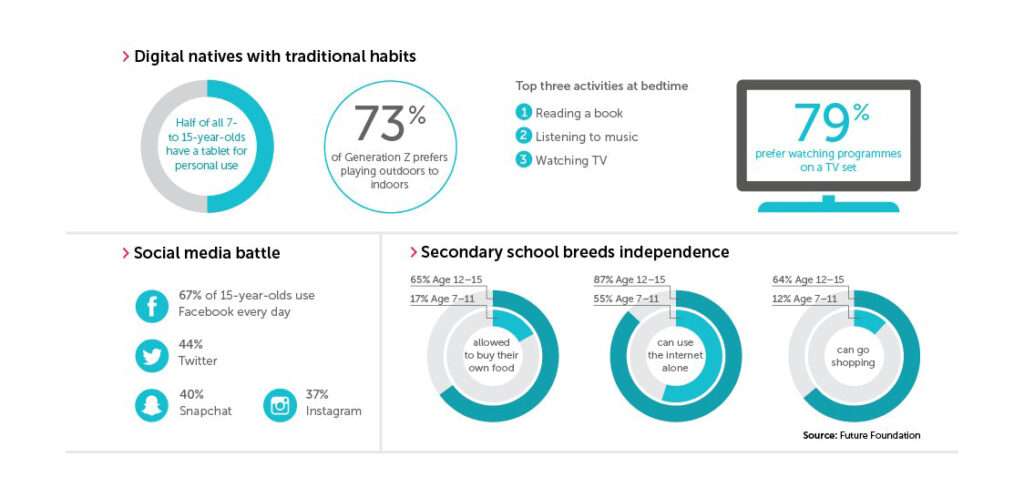
Like Millennials, Gen Z are very socially motivated, but where they differ is that they’re much more engaged by photo and video-rich apps than other generations.
TikTok and Snapchat are some of the most popular apps for this generation.
Gen Z also doesn’t spend as much time on games as older generations. In fact, they spend 10% more time on non-gaming apps than other generations do.
PRO TIP:
If you want to engage with the Gen Z crowd, focus on adding social features to your app with rich photo and video components.
2.3: Older Generations
When it comes to older generations, app marketers will have to use a different strategy.
Gen X and Baby Boomers didn’t start using smartphones until adulthood, and they use them very differently as a result.
Mobile App Usage by Generation
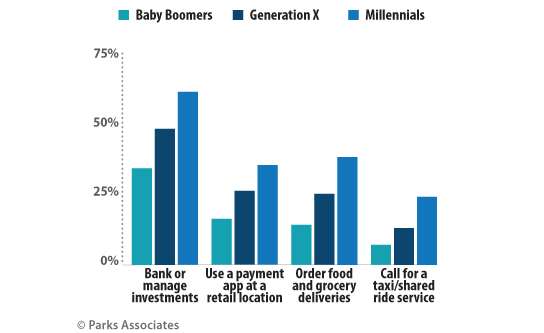
Photo Credit: parkassociates.com
Baby Boomers were born between 1946 and 1964, meaning that most of them either have been retired for several years or are hitting retirement age now.
Gen X were born between 1965 and 1980, which means they make up the older half of the working population.
Gen X is unique in that they are the most likely to use apps to manage their health.
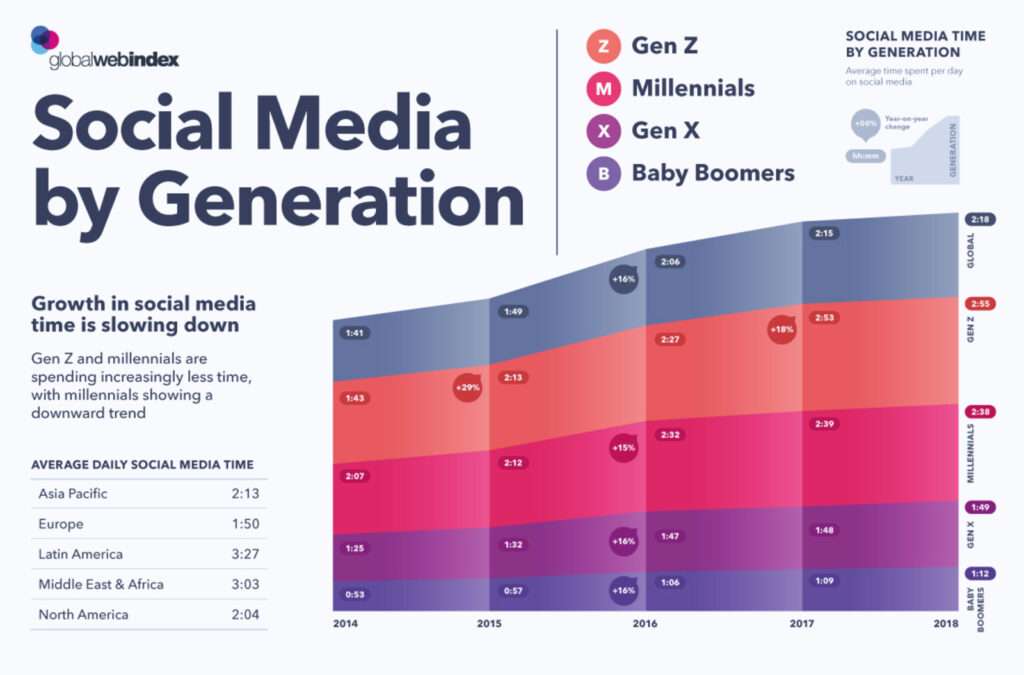
Photo Credit: visualcapitalist.com
They’re 37% more likely than Millennials and 31% more likely than Baby Boomers to do so.
In general, Boomers tend to be most concerned about privacy when it comes to their apps and technology in general.
That same survey indicated that Boomers were 54% more likely than Millennials and 23% more likely than Gen X to be concerned about privacy.
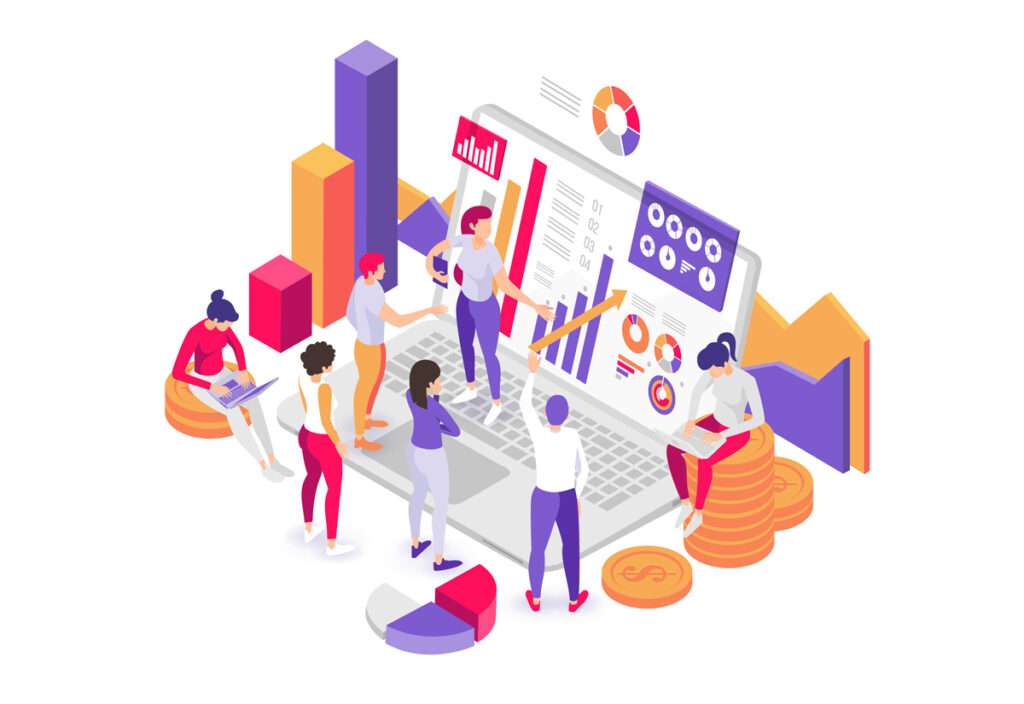
Since Baby Boomers are more likely to be concerned about privacy than other generations, app developers will need to take extra steps to ensure that older users feel safe with their app.
At the same time, it also seems that older generations are becoming increasingly more comfortable with technology.
A 2019 study indicated that 65.5% of Baby Boomers owned a smartphone.
PRO TIP:
Baby Boomers and Gen X have more money to spend than their younger counterparts, so if you can cater to their needs, it could be an opportunity.
The app market is becoming more competitive every day, but there’s still plenty of room for new, innovative apps on the market for those who are able to cater to their demographic effectively.
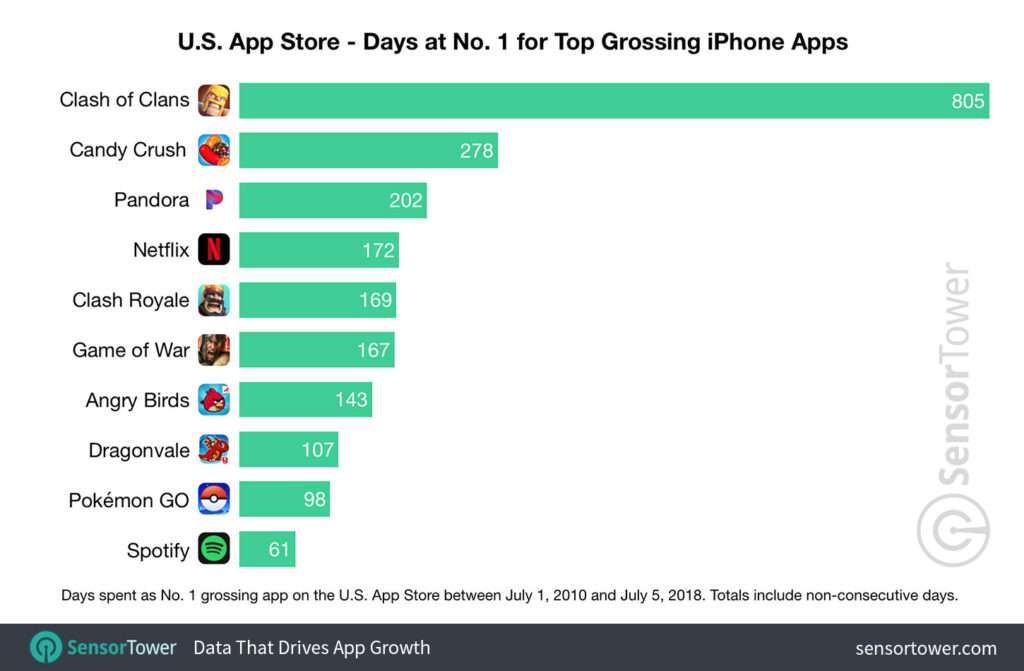
3.1: App Stores
The two biggest app stores on the market are the Google Play Store and the Apple App Store.
According to Statista, the Google Play Store has 2.87 million apps while the Apple App store has 1.96 million apps.
Total App Downloads by Country, 2016-2019
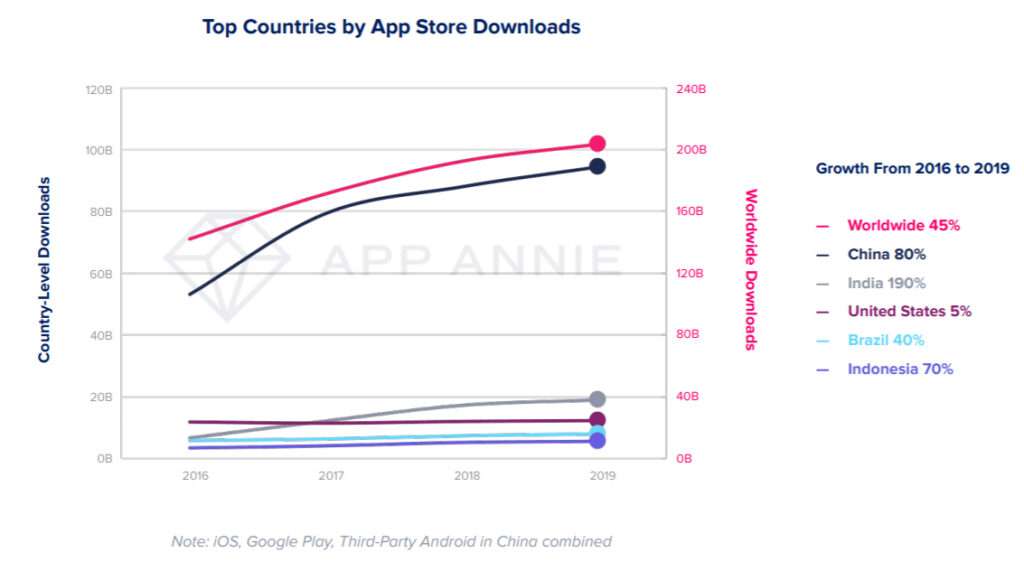
To reach the widest global audience, it helps to have your app on both app stores, but if you need to pick just one, you can look at their general demographics and see which one aligns best with your app.
iPhone users tend to be more politically liberal, more educated, and live in large cities.
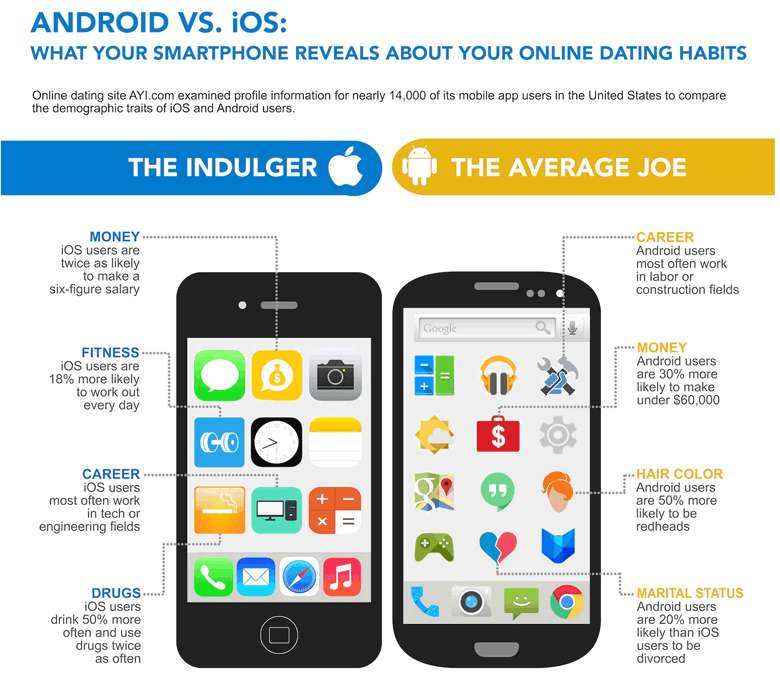
Photo Credit: usabilitygal.com
They’re also more likely to be high-income, while Android users are generally more middle-class.
3.2: Game Apps
Games are an important subsection of the app market.
They have plenty of advertising potential and can be very financially lucrative.
Game downloads, 2016 – 2019

Photo Credit: sensortower.com
There are also more gaming apps on the app store than any other sub-sector.
In August 2020, over 20% of apps on the Apple store were games. The next most saturated categories are business, education, and lifestyle.
PRO TIP:
Keep in mind that because there’s a huge number of games available right now doesn’t mean that everyone plays them.
Gaming tends to be more of a niche market, so those who do play can be very loyal.
Just over 65% of smartphone users have gaming apps on their phones.
3.3: Social Media and Communication Apps
Social media has become particularly popular over the last decade or so.
Many people rely on social media apps to communicate with their friends and family or even to work.
Social Media Usage by Age and Gender
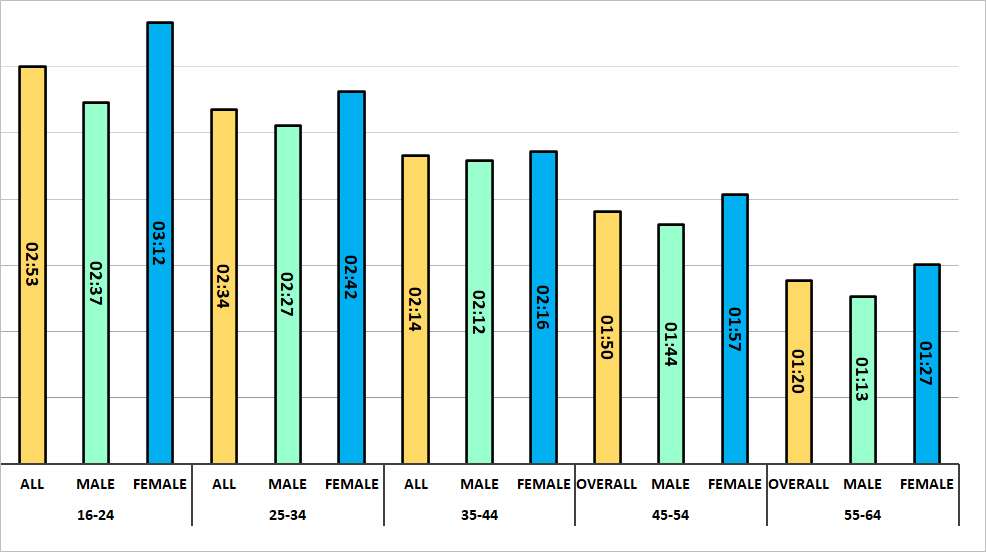
Photo Credit: wearesocial.com
Communication and social is also the most widely used category of apps on the market. Right now, 97.9% of mobile users have communication and social media apps on their phones.
In fact, the two largest apps in the world are social media and communication apps.
In terms of downloads, Facebook Messenger is the largest app on the market.

Photo Credit: oberlo.com
And in terms of monthly active users, WhatsApp currently comes out on top.
3.4: New Apps
While the app market is already saturated, there’s always room for new apps.
The top 100 most downloaded apps change consistently every year with new releases.
In 2019, a report from App Annie indicated that 35 of the top 100 apps were new.

Additionally, data shows that consumers are taking the time to engage with new apps.
The App Annie report also showed that users were engaging slightly less with top 30 apps and more with other apps in 2020 than they were in 2016.
This indicates that today’s users are open-minded and are looking to explore new apps.
The way consumers are spending money on apps has changed over time.
Data shows that people are willing to pay for high-quality apps, but spending habits vary by demographic.
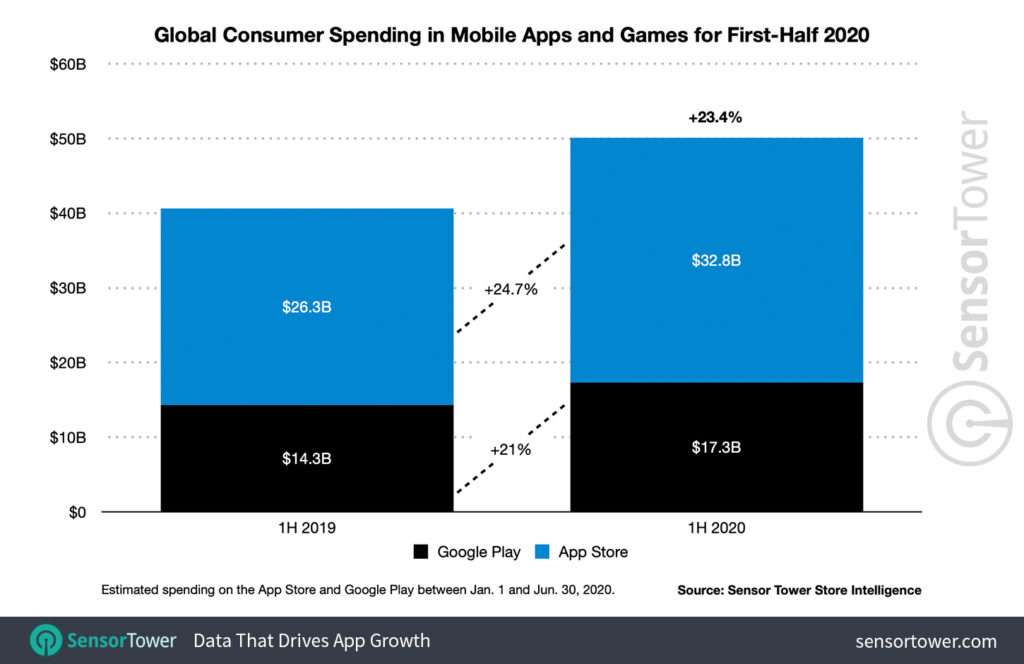
Photo Credit: sensortower.com
4.1: App Revenue
General revenue for the app market is growing.
While apps only made $97.9 billion in 2014, the market is projected to grow to a total of $935.2 billion by 2023.
Additionally, apps on the Apple store bring in more revenue than those on the Google store.

Photo Credit: marketingcharts.com
96 percent of apps on the Google store are free to download, as opposed to 92% on the Apple store.
Globally, the Apple store generated twice as much revenue in the first half of 2020 than the Google Play store.
This could be a result of the difference in user demographics on the two stores.
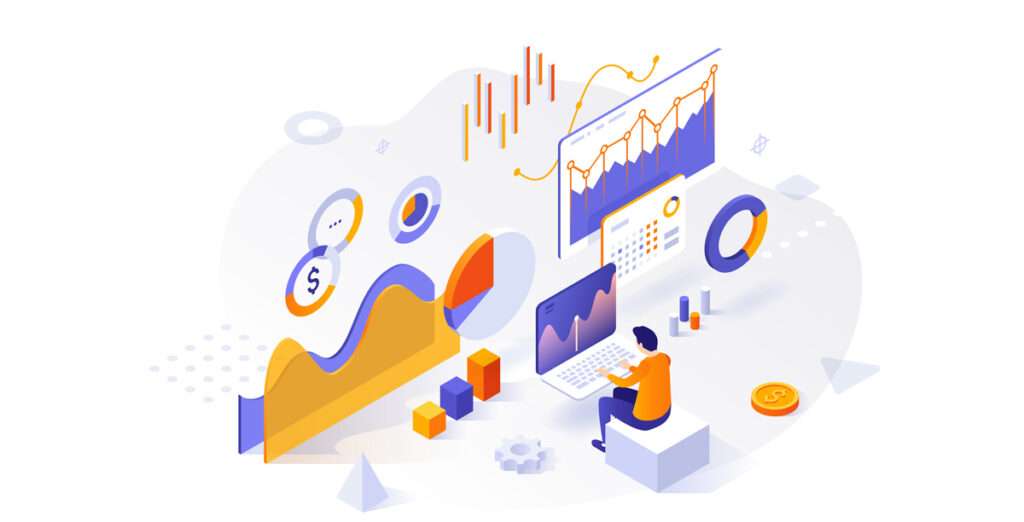
If these statistics tell us anything, it’s that the mobile app industry is always innovating, leading to a constant increase in user engagement.
This is a good thing for app developers and entrepreneurs looking to break into the app market. There’s simply a wealth of opportunities, as long as you have something to offer users.
Understanding how your target demographic uses their smartphones can go a long way when it comes to developing your app development strategy.
In our Simple Starter package, we set you on the right path with target user analysis and market research so you have a complete understanding of who your users are, what challenges they’re facing, and how they can benfit from your app.
How will you use the data in this guide to create a valuable mobile app for your hungry users?




